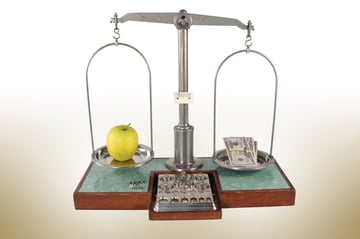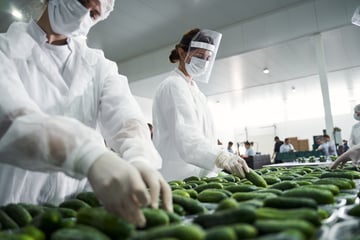There are many factors to consider when choosing a food safety software system, and the variety of product features and choices can be overwhelming. We offer three straightforward considerations when you are ready to make that decision.
Food safety is a shared responsibility between industry and government – while the Food and Drug Administration (FDA) sets guidelines for compliance to ensure consumer safety, it’s up to companies to take proactive steps to monitor their supply chains and ensure their products are safe.
In recent years, food quality and safety have been at the top of mind for both consumers and food companies across the globe. To prevent food product recalls and meet regulatory compliance, food companies need to take a proactive approach to ensure food quality and safety, anticipating risks and mitigating problems before a flawed product reaches the consumer.
One way that companies can ensure product quality and safety is by investing in a food safety system. Food safety systems provide companies with the means to manage food quality, safety, and compliance documentation; capture and report food quality incidents’ and store and access data in a digitized, single platform -- all major priorities as the industry and government continue to prioritize preventative action in an increasingly complex global food system.
Below we outline three major considerations for choosing the best food safety software system:
1. Customizable, user-friendly platform:
An effective food safety system should be user-friendly, providing a convenient platform – such as a dashboard view – to quickly see which suppliers have expired documentation or the highest number of quality incidents across the board. With a customizable platform, users can tailor their dashboard to meet their needs best -- whether it’s easily accessing vendor contact information, checking food safety and quality certifications, or building out questionnaires, the right system will make monitoring safety and quality simpler for any team.
2. Real-time data for informed decision-making:
The ability to utilize data in real-time to quickly and efficiently respond to food quality incidents or monitor food safety audits and assessments is key for companies investing in food safety systems. Having real-time data to support intelligent decision-making is not only responsible from an operational standpoint but a fiscal one, too, saving your company time and resources while maintaining credibility. With data easily accessible and visible in one centralized location for all involved, your company will be able to act or respond quickly and responsibly to a quality incident because you have the data you need – data that is accurate, easy to find, and not siloed.
3. Centralized platform:
A centralized flow of quality information among all stakeholders throughout a company’s supply chain is critical to maintaining food safety and quality, meeting regulatory requirements, enabling company growth, and brand integrity. With a centralized platform, you have one single source of truth for complete supply chain visibility and traceability. Everyone in your organization can use a cross-functional system to proactively manage product quality or take swift action with any withdrawal incident or recall management. Finally, you will have all the required recordkeeping at your fingertips, reducing the time needed to access necessary documentation from hours to minutes should the FDA come knocking at your door.
Today, many companies still manage their quality and safety data, certifications, and documentation on paper or in spreadsheets. In an industry that is continuously moving toward digitization, having technology in place to better manage and monitor this information is increasingly important for success – and compliance. The right food safety system transforms manual, siloed processes into collaborative, tech-enabled ones that enable data visibility, ensure food safety and quality compliance, and prepare you to act quickly and responsibly when necessary. And ultimately, this all helps protect the consumer (and your brand) for years to come.
Other posts you might be interested in
View All Posts
Food Industry
6 min read
| June 18, 2019
Restaurant Operations Versus the Food Safety Department: Partnering for Success
Read More
Quality Management
7 min read
| September 22, 2021
The Essential Elements of Successful Food Quality Teams
Read More
Product Formulation
10 min read
| February 24, 2023

